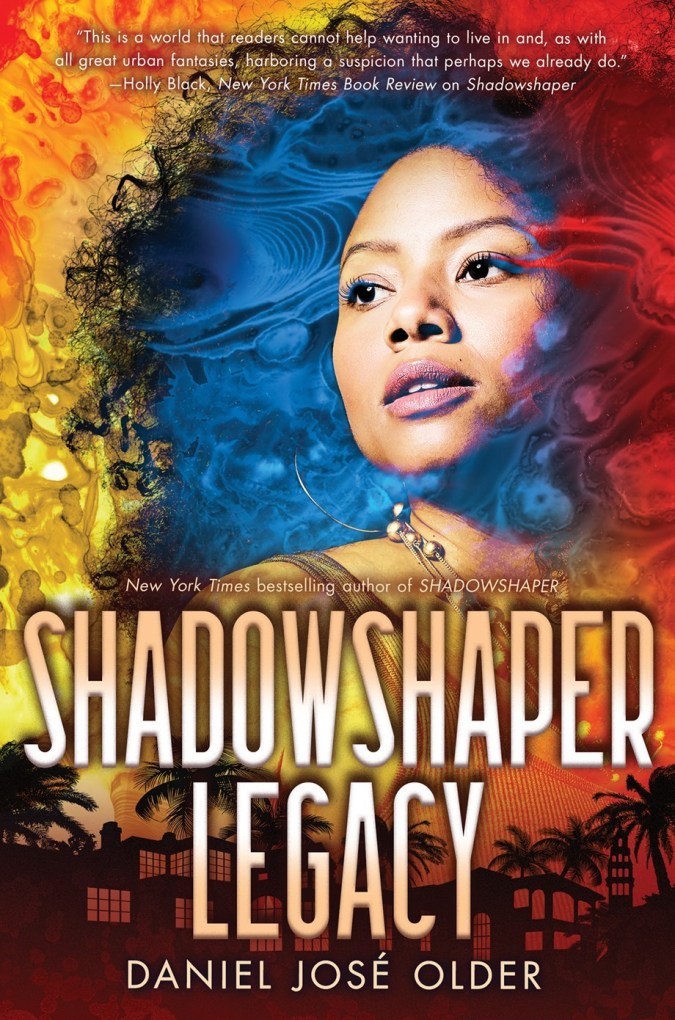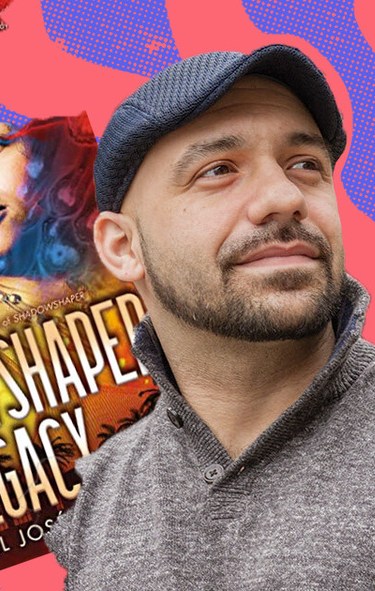Fans of Daniel José Older’s acclaimed young adult trilogy Shadowshaper Cypher will not be disappointed with the series’ third and final novel, Shadowshaper Legacy. In the newest book, which was published on Tuesday, Older deepens the history of the Shadowshapers, traveling back in time to Puerto Rico to explain the origins of their magic. For readers new to the series, shadowshaping is the magical practice that allows for Puerto Rican teenage protagonist Sierra Santiago and her crew to give shape to the spirits of their ancestors and friends through art and music. The Shadowshapers summon these spirits when they are in trouble and need help battling their enemies, who in this case turn out to be a gang of white supremacist wizards called Bloodhaüs and a group of magicians known as House Iron that secretly run the criminal justice system.
Legacy does an excellent job of wrapping the series up and may be the strongest of all three novels.
Legacy does an excellent job of wrapping the series up and may be the strongest of all three novels, largely because of the way it switches perspectives among the characters in Sierra’s crew. This change in perspective allows for the reader to learn more about the anxieties and dreams of characters like Juan, Sierra’s older brother, or Tee, who longs for her girlfriend Izzy who is now locked up. There are also some keen and almost adult observations about the experience of incarceration. In one scene, Anthony, Sierra’s somewhat boyfriend, asks Juan: “You ever wonder what the hell was wrong with you that you once found prison rape jokes funny?” Then later: “Like it’s sociopathic, really, if you think about it, to think something like rape is funny. It’s completely evil. But like we do, we’re told that’s just cool, haha, wow … It’s just gross to me and I’m mad it took me being in a position where I was worried about it actually happening for me to take it seriously. What kind of human am I?”
Until now, the trilogy has been anchored in Sierra’s perspective. In the first book, she is a young teenage girl coming to terms with her own power in a city that is disappearing in front of her to gentrification, just like the fading murals she encounters. Evil spirits are possessing the bodies of brown and Black folk, trying to come for Sierra, her family and her friends. The second book, Shadowhouse Fall, explores the complicated dance of allyship: who can Sierra trust as she battles everyday racism, police brutality and the school-to-prison pipeline using her artistic powers? With Older’s wit, humor and excellent ear for dialogue, Legacy complicates Sierra’s quest for justice by dramatizing the complicated negotiations and concessions we are sometimes forced to make with our enemies in order to survive.

For young adult readers who love both fantasy and activism, this series hits the mark.
The metaphors in these books are powerful and clear, and they particularly resonate for those living in cities that have increasingly become unaffordable for poor, working- and middle -class families to live in. The whole series is haunted by the specter of gentrification. But there’s a deeper metaphor happening that may be missed if you only read these books as coming-of-age tales. The Shadowshaper trilogy cleverly portrays the way in which artistry and heritage are threatened with the increase of gentrification, a dynamic that has particularly been true for Puerto Rican artists living and working in New York City. Whereas Nuyorican literary production was booming in the ‘70s and ‘80s, with the likes of Miguel Piñero, Pedro Pietri and Nicholasa Mohr, the publication of Puerto Rican writers living in New York decreased following the elections of Rudolph Giuliani and Michael Bloomberg, both mayors whose policies pushed out poor and working-class people of color. With this series, Older seems to argue that art is a way to fight back against these forces and is an especially vital tool for young people of color confronting injustice.

Turning teenage anxieties and challenges into monsters in fantasy is not at all a new move in literature or television shows made for teens. Buffy the Vampire Slayer, for instance, was famous for creating monsters that embodied adolescent fears, but the series was also unbearably white and often hard for people of color to relate to. Books like the Shadowshaper trilogy, which speak to the particular challenges of being a young person of color in New York City, would have been impactful in the ’90s in a way all-white supernatural teen series were not. Luckily, we have these books now. For young adult readers who love both fantasy and activism, this series hits the mark.




